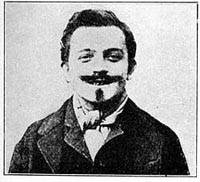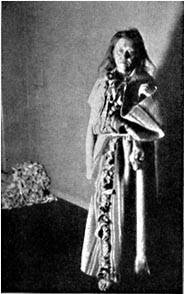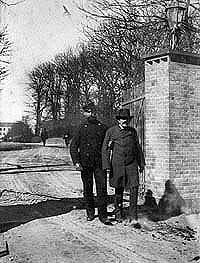

"”The differences in the
expressions seen in a patient
suffering from Manic Depressive
Psychosis, is often striking”.
In these photos we are
looking at the same patient
in a manic and a depressive
phase respectively.
Depression
August Wimmer’s description of the depressive state:
”The depressive patient usually has a strong feeling of being worthless; he is self-effacing, extremely modest and tries to fade into the background. He tries to cause as little inconvenience as possible, is lacking self-appreciation and is often reproachful towards himself bordering on delusion. The patient is often seen probing into his earlier life searching for real or imaginary “sins” and “crimes”.
Wimmer p.377.
“A young melancholic (depressed) woman writes to her father: ‘Dear Father at times I’m in doubt if I can be allowed to consider myself your daughter’“.
Wimmer p 378.
Descriptions of depression seen from the patients view
”A patient declares that she is not in a hospital , but in the “Judgment Chamber”
Wimmer s. 379
”A patient explained: ‘If I’m addressed, lots of words are lost and I have to try and fill in the blanks myself’ ”.
Wimmer s. 377
”An elderly governess with very high morals is accusing herself of having dragged the whole country down with her into misery, she sees herself as being heartless, shunned by God ... aware that everybody knows how bad a person she is …”
Wimmer s. 377
“A young melancholic (depressed) woman writes to her father: ‘Dear Father at times I’m in doubt if I can be allowed to consider myself your daughter’“.
Wimmer s. 378

„”A patient who has a habit of
pulling the woollen rugs apart and
adorning herself with the rags.
She is aggressive in a sexual manner
but conducts herself in silence and
with a sad expression.
Wimmer p 398.

The police participated at
compulsory admissions.
Manic states of mind
”The patient behaves elated, agitated, cheerful, is happy and feels energetic in both body and mind. The patient’s basic mood is labile and he is sensitive to his surroundings. The patient is easily moved to tears and can cry over both his own excellence and his failure. On the slightest provocation he can explode with uncontrolled anger, telling people off and becoming violent”.
Wimmer s. 385
”Often occurring is a strong desire to talk ....also seen is a high level of eloquence.....the patient has a constant need for narrating stories, always giving his opinion, wants the final word, he has a tendency to sing, whistl, and shout the patient seems never to tire out......he can be active day and night darts around without getting anything finished.
Wimmer p 385/391
The first legislation on mental illness
In 1925 a judgment was delivered and verified by all authorities involved, that mentally ill patients weren’t as such to be declared incapable of managing their own affairs and therefore without legal rights. Finally, in 1938, an actual legislation on mental illness was introduced to ensure the legal rights of mentally ill patients.
At that time the predominant opinion was quite optimistic regarding cures for mental illnesses. This has the result, that certain patients suffering from severe psychosis could be committed to treatment. The police had to be present when patients were committed to the hospital.
From 1938 a committed or compulsorily detained patient could file a complaint to the Minister of Justice. However the decision made, rested to a high degree on the statement of the attending Head Psychiatrist. In 1954 it was made possible for a mentally ill person to get a decision of compulsory admission tested in court. However, it was extremely rare for the jury to decide in favour of the patient.




